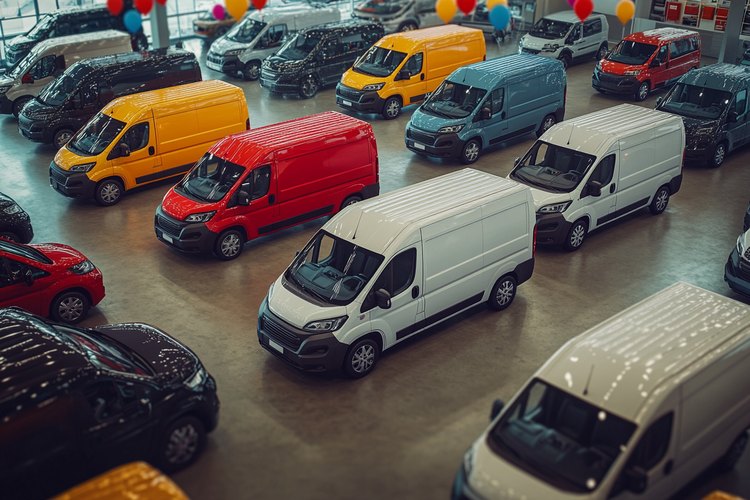Nissan Urvan 2025 Guide: Updates, Features, and Interior Flexibility
Blending utility with modern updates, the 2025 Nissan Urvan remains a dependable choice for both business and personal transport. This overview highlights the latest design refinements and interior configurations, giving you a clearer perspective on how the new model adapts to everyday needs. Explore more about what makes this release a practical option in today's evolving vehicle landscape

The Nissan Urvan has long been a staple in the commercial and passenger van segment, known for its durability and functional design. The 2025 model year brings refinements that enhance its appeal to a wide range of users, from small business owners to families requiring spacious transportation. This guide explores the key aspects of the Nissan Urvan 2025, focusing on its exterior updates, interior flexibility, and engine performance.
Exterior Updates and Functional Styling
The 2025 Nissan Urvan maintains its signature boxy silhouette, which prioritizes interior space over aerodynamic styling. This design philosophy ensures maximum cargo and passenger capacity, a critical factor for commercial operators. The front fascia receives subtle updates, including revised headlight housings and a refreshed grille that aligns with Nissan’s current design language. These changes provide a more modern appearance without compromising the vehicle’s utilitarian character.
Build quality remains robust, with reinforced panels designed to withstand the rigors of daily commercial use. The sliding side doors and rear swing-out doors facilitate easy loading and unloading, whether transporting goods or passengers. Ground clearance is adequate for urban environments, though the Urvan is not intended for off-road use. Available in multiple configurations, including standard roof and high roof variants, the exterior dimensions cater to different operational requirements.
Interior Adaptability and Cabin Practicality
One of the Nissan Urvan 2025’s strongest attributes is its interior flexibility. Depending on the configuration, the vehicle can accommodate up to 18 passengers in high-density seating arrangements, or it can be converted into a spacious cargo hauler with removable seats. This adaptability makes it suitable for shuttle services, school transport, delivery operations, and family use.
The cabin layout prioritizes functionality over luxury. Seating materials are durable and easy to clean, designed to withstand heavy use. The dashboard is straightforward, with clearly labeled controls and a focus on driver visibility. Depending on the trim level, features may include air conditioning, power windows, and a basic infotainment system with connectivity options. Storage compartments are strategically placed throughout the cabin, providing convenient access to personal items and tools.
Headroom and legroom are generous, particularly in high-roof models, ensuring passenger comfort during longer journeys. The flat floor design simplifies movement within the cabin and maximizes usable space. For cargo applications, the interior can be configured with tie-down points and protective panels to secure and protect goods during transit.
Engine Efficiency and Safety Guidance
The 2025 Nissan Urvan is expected to continue using a proven diesel engine platform, balancing power and fuel efficiency. While specific engine specifications may vary by market, the typical setup includes a four-cylinder diesel engine paired with a manual or automatic transmission. This powertrain is designed for reliability and moderate fuel consumption, important considerations for commercial operators managing fleet costs.
Performance is adequate for urban and highway driving, though the Urvan is not designed for high-speed performance. Acceleration is steady, and the suspension is tuned to handle varying loads, from empty to fully loaded configurations. Maintenance intervals are designed to be manageable, with service parts generally accessible and reasonably priced.
Safety features in the 2025 model are expected to meet regional regulatory standards. Depending on the market, the Urvan may include anti-lock braking systems, airbags for the driver and front passenger, and stability control. Some configurations may offer additional safety technologies such as parking sensors and reverse cameras, which are particularly useful given the vehicle’s size. Drivers should verify the specific safety equipment included in their region, as features can vary significantly.
It is important to note that while the Urvan provides essential safety features, it may not include the advanced driver assistance systems found in modern passenger cars. Operators should ensure proper driver training and adherence to load capacity guidelines to maximize safety.
Practical Considerations for Buyers
When evaluating the Nissan Urvan 2025, potential buyers should consider their specific use case. For commercial applications, factors such as payload capacity, fuel efficiency, and maintenance costs are paramount. For personal use, comfort features and seating configurations become more important. The vehicle’s resale value tends to be stable in markets where commercial vans are in demand, though this can vary based on condition and mileage.
Prospective buyers should also research local dealer networks and parts availability, as these factors significantly impact long-term ownership costs. Test driving different configurations can help determine which variant best suits your operational needs. Additionally, reviewing warranty terms and available service packages can provide peace of mind for commercial operators relying on the vehicle for daily operations.
Conclusion
The Nissan Urvan 2025 represents a continuation of the model’s core strengths: versatility, durability, and practical design. Its exterior updates bring a fresher appearance while maintaining the functional styling that commercial users depend on. The interior’s adaptability allows it to serve multiple roles, from passenger transport to cargo hauling. Engine performance focuses on reliability and efficiency rather than high performance, aligning with the needs of its target market. While it may lack the advanced features of modern passenger vehicles, the Urvan delivers on its promise of being a dependable workhorse suitable for various applications.




